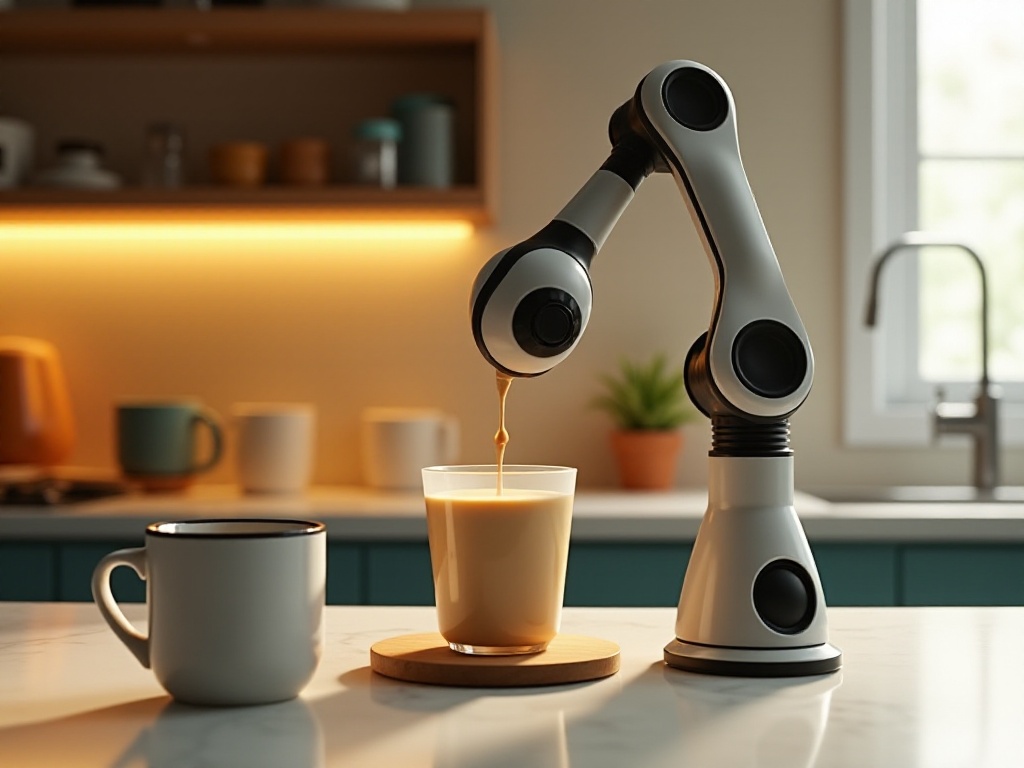Every time I go to the supermarket, I habitually buy a bunch of grapes. I must say, grapes are truly a magical fruit. Recently, I discovered that they're not just for snacking - they can be incredibly useful in daily life. Today, I'd like to share my unique discoveries that will help grapes shine in your life.
To be honest, I used to view grapes as just ordinary fruit until a chance discovery revealed their many hidden properties. Like items in a video game, they seem ordinary but hold secret powers. Now, whenever I buy grapes, I think about all their novel uses, which I find particularly fascinating.
The other day, I hosted a small wine tasting at home with friends. Everything was well-prepared until dining time when I realized the red wine was too warm. As we all know, wine temperature greatly affects the tasting experience. Just as I was at a loss, I spotted some grapes in the refrigerator and had a brilliant idea.
You might not expect it, but frozen grapes make perfect ice cube replacements! This discovery literally made me jump with joy. Traditional ice cubes' biggest problem is diluting drinks, especially for quality beverages like wine - using regular ice cubes would be wasteful. But frozen grapes are different - they keep drinks cold without affecting their original taste.
When we first tried this method, my friends and I were amazed. Frozen grapes not only look elegant but also provide a sweet grape flavor when eaten - an unexpected delight. Since then, I always prepare frozen grapes for parties; they've become my essential tool.

To perfect this method, I conducted numerous experiments. After repeated testing and improvements, I finally developed the perfect method for making frozen grapes. First, grape selection is crucial. Choose fresh, plump grapes, preferably varieties with high water content and thin skins but thick flesh. I particularly recommend Kyoho or Summer Black grapes, as these varieties freeze exceptionally well.
The washing step is also critical. Thoroughly clean the grapes with water, and preferably soak them in food-grade baking soda water to remove pesticide residues. Don't skimp on the drying step - I usually pat the grapes dry with kitchen paper to ensure no water droplets remain. This step is crucial because any surface moisture will form ice crystals during freezing, affecting the texture.
For storage, I've found sealed containers work best. Arrange the grapes individually in the container, like arranging building blocks. This prevents them from sticking together and ensures even freezing. Once in the freezer, they take about 4-6 hours to freeze completely. However, I usually put them in at night so they're ready the next day.

This trick's practicality exceeds expectations. In summer, I love adding frozen grapes to various drinks. For example, adding a few to lemonade not only keeps it cold but adds a fruity sweetness to the otherwise simple drink. After finishing the drink, the partially thawed grapes make a delightful treat.
For wine tasting, this trick is genius. Temperature control is especially crucial for white wine. Traditional methods use ice buckets or ice cubes, but buckets are bulky and inconvenient, while ice cubes dilute the wine. Frozen grapes solve this perfectly. Based on my observations, frozen grapes can maintain white wine at the ideal drinking temperature of 8-12°C for about 45 minutes, about 15 minutes longer than regular ice cubes.
Moreover, frozen grapes are excellent for picnics or outdoor activities. I often bring a thermos with a few frozen grapes inside. This keeps drinks cool even during extended outings. Tests show that in 25°C ambient temperature, 5-6 frozen grapes in a 500ml thermos can keep drinks below 15°C for up to 3 hours.
They really shine at parties. I often prepare a large plate of frozen grapes, useful both for cooling drinks and as snacks. Friends praise this creative idea as eco-friendly, practical, and edible. Plus, frozen grapes have a completely different texture from regular ones - they're refreshingly cold and very popular.
Through continued experimentation, I've discovered even more ways to use frozen grapes. For instance, they can be crushed to make smoothies. Simply blend frozen grapes without adding ice for a smooth slush. Adding mint leaves or lemon juice creates an even more refreshing taste.
I've also tried using frozen grapes as dessert decorations. Sliced frozen grapes can garnish cakes or mousses. They not only look elegant but help keep desserts cool. This is especially popular in summer, and many friends have learned this trick from me.
Once, I even tried putting frozen grapes in coffee. Though it might sound strange, it worked surprisingly well. It quickly cools coffee to drinking temperature, and as the grapes thaw, they add a subtle fruity sweetness, creating a unique flavor.
While this method is great, some details need attention. First, grape selection is crucial. I recommend seedless varieties for convenience. Seedless grapes typically have higher water content and freeze better.
Regarding storage, ensure grapes are completely dry before freezing. Surface moisture will cause them to freeze into clumps and affect texture. I carefully wipe each grape with kitchen paper - it's tedious but worth it.
For freezing duration, I recommend freezing only three days' worth at a time. While frozen grapes can be stored long-term, extended storage may affect taste. Frequent freezer access also affects freezing quality. It's best to freeze amounts based on actual needs.
Temperature control is crucial. My freezer is set around -18°C, which works well. If too cold, grapes become too hard; if too warm, storage life is affected. Let them warm slightly before use for better texture.

This technique has inspired me to think about innovative uses for other ingredients. The same principle works with blueberries and strawberries. Experiments show that 100g of frozen blueberries provides cooling equivalent to about 120g of regular ice. Plus, frozen fruit offers additional nutrition - these frozen blueberries provide about 40 calories.
Different fruits show unique characteristics when frozen. Blueberries become particularly crispy, making great snacks. Frozen strawberries develop a smooth texture, perfect for smoothies or juices. Each fruit has its unique charm, waiting to be discovered.
This discovery has made me more aware of other innovative possibilities in daily life. For instance, I found that lemon slices can replace lemonade, and mint leaves can substitute for mint candy. These small changes can make life healthier and bring unexpected surprises.
Cost-wise, this method is quite economical. Let's do the math: regular grapes cost about 15 yuan per pound, yielding about 50 grapes. Using 4-5 grapes per time costs about 1.5 yuan. In comparison, a bag of regular ice costs 3-5 yuan and can't be reused.
More importantly, frozen grapes serve multiple purposes. They work as cooling tools and can be eaten afterward, eliminating waste. Unlike regular ice, they don't dilute drinks, preserving the original flavor. From this perspective, it's a worthwhile investment.
For those who frequently host parties or enjoy wine tasting, this method can save considerable costs. Traditional cooling methods, like professional wine accessories or ice buckets, can cost hundreds of yuan. These tools are often underused and take up space. In comparison, frozen grapes are particularly cost-effective.
After sharing this tip, I received many creative uses from readers, which delighted me. Some readers put frozen grapes in Yakult, saying it tastes fantastic. Others created summer specials by mixing frozen grapes with sparkling water and mint leaves for unique beverages.
One reader shared that she uses frozen grapes for dessert decoration with great results. Placing sliced frozen grapes on cakes not only looks beautiful but helps keep the cake fresh. Another reader uses them in fruit tea, noting that the grapes add a unique fruit aroma as they thaw.
The most creative was a food blogger who ground frozen grapes into powder to sprinkle on ice cream, creating a new dessert. These innovative uses make me particularly happy, proving this simple trick can bring many possibilities to life.

Through this simple life hack, I've deeply realized that opportunities for innovation exist everywhere in life. What matters isn't the trick itself, but the mindset of discovering and solving problems. Sometimes, looking at things from a different angle can make ordinary items serve extraordinary purposes.
This also taught me that improving life quality doesn't necessarily require much money - what's key is the mindset to discover and try new things. Like this frozen grape trick - simple yet practical, low-cost but experience-enhancing.
There are many such life wisdom tips. Like how to keep mirrors fog-free, or how to instantly recognize keys - these are all topics worth exploring. Every small discovery in life can become a new way to improve life quality.
Finally, I want to say that innovation comes in all sizes - what's important is having the courage to try. When I first tried using frozen grapes for cooling, I wasn't sure how it would work. But it was this spirit of experimentation that led to discovering this useful trick.
So, I hope everyone can maintain this exploratory mindset - you might discover new joys in life too. I look forward to seeing more people sharing their life wisdom and innovative discoveries in the comments. Next time, we'll continue exploring other interesting life hacks - stay tuned.
 Previous
Previous
